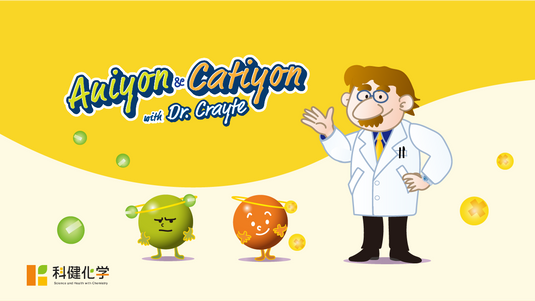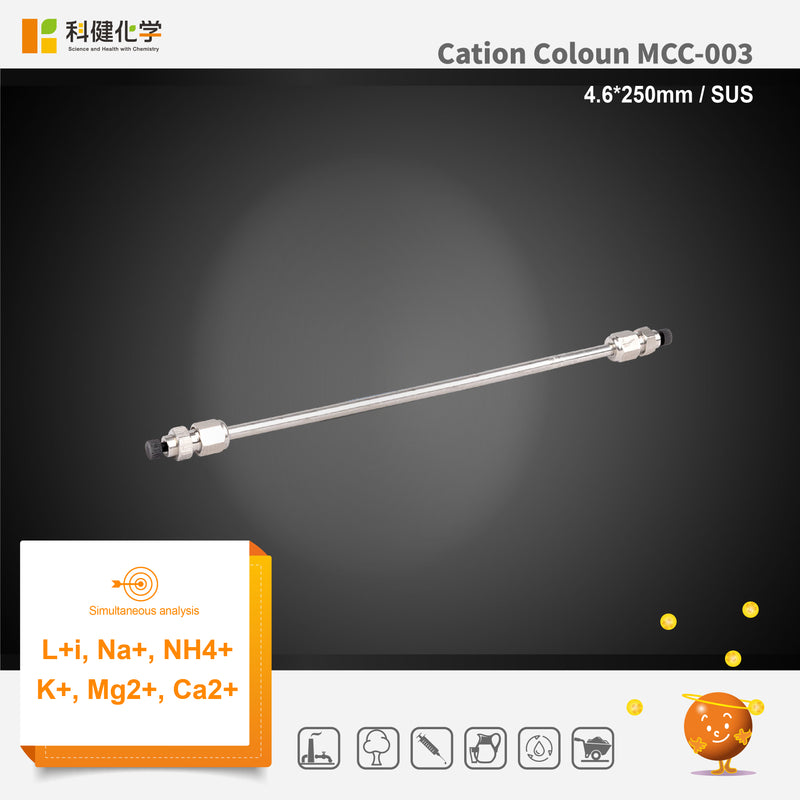
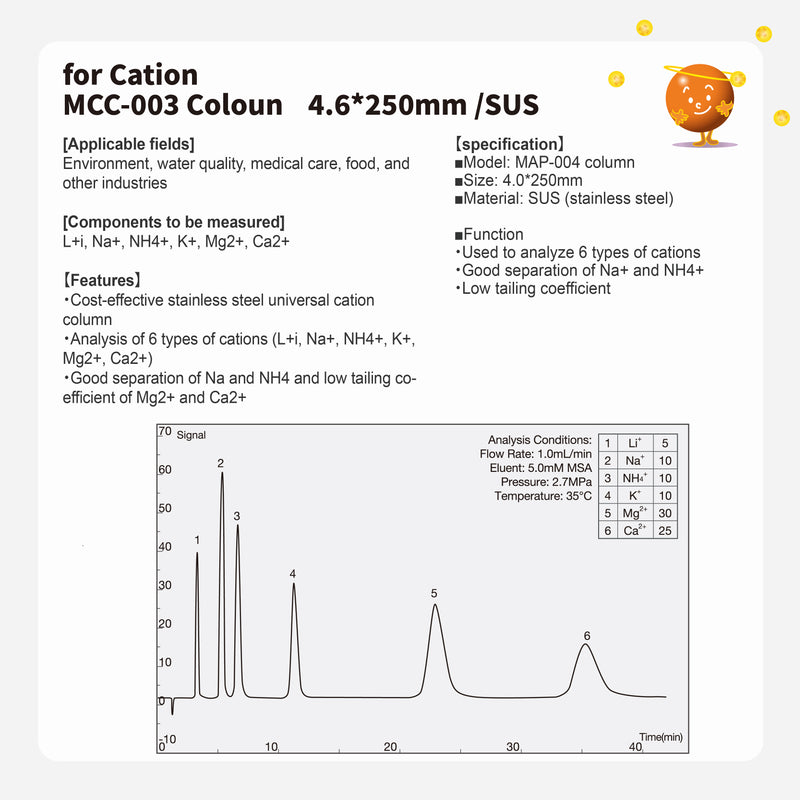
Ion exchange chromatography is a separation technology.
The dissociatable ions on ion exchange resin exchange reversibly with the solute ions with the same charge in mobile phase. Ions are separated because of their difference in affinity to ions exchangers. So ion chromatograph is generally applicable to the separation and detection of hydrophilic anions and cations.
After the sample is injected, the ions to be analyzed are exchanged with dissociatable ions on the ion exchange resin at first (i.e. retained on the analytical column). When NaOH solution is used as eluent to analyze F- , Cl- and SO42- in the sample, the ions retained on the analytical column are replaced by OH- in the eluent, and the ions with weak affinity to the resin are eluted firstly. This is the separation process of ion chromatography.
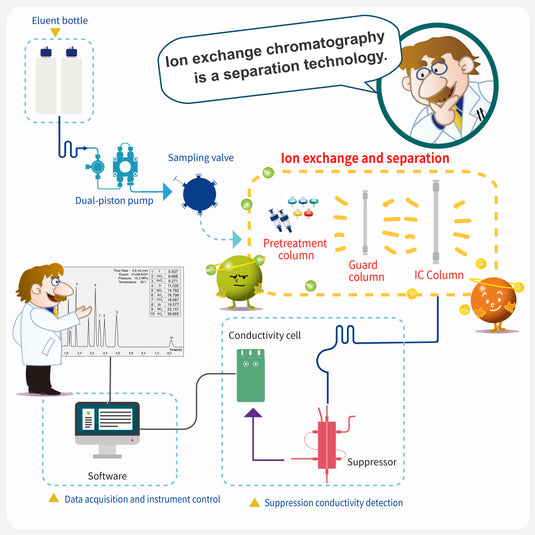
Which column material is better, SUS or PEEK?
Most of the liquids used in ion chromatography are aqueous solutions, so we recommend PEEK resin columns, which are easy to handle, for columns that are frequently installed and removed. By the way, PEEK resin is inert to compounds adsorbed to metals (ATP, ADP, etc.), so it improves problems such as non-eluting of components and tailing of measurement peaks.
If you are concerned about cost, a stainless steel (SUS) column would be a good choice. Some people shy away from using metal for piping because they are analyzing ions, but the stainless steel used for columns has excellent corrosion resistance, so there is no problem using it for ion chromatography.
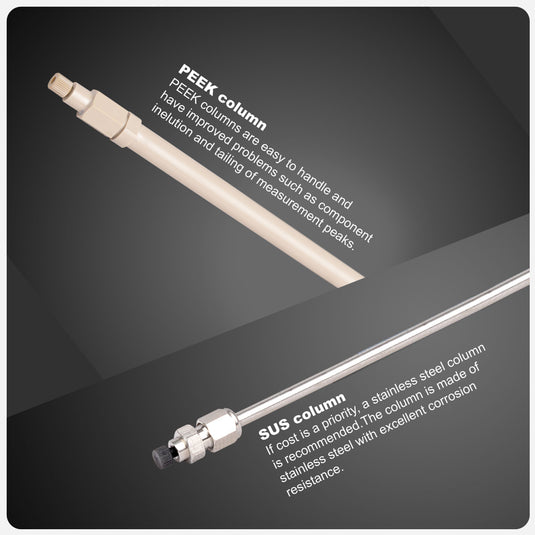
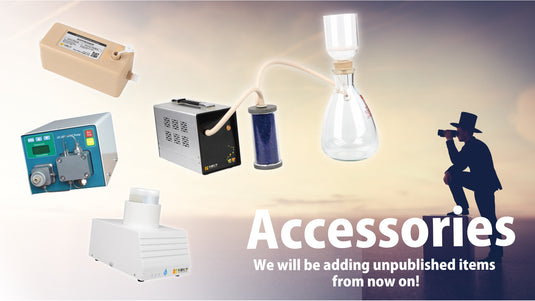
Accessories
There are many peripheral devices and experimental equipment that are not listed. Please feel free to contact us.
Already Membership Register?
Our EC site discloses product prices and sells products only to customers who have registered as members.
Registered customers will receive newsletters, the latest information, and member-only benefits.
*Of course, there is no cost to register as a member.
